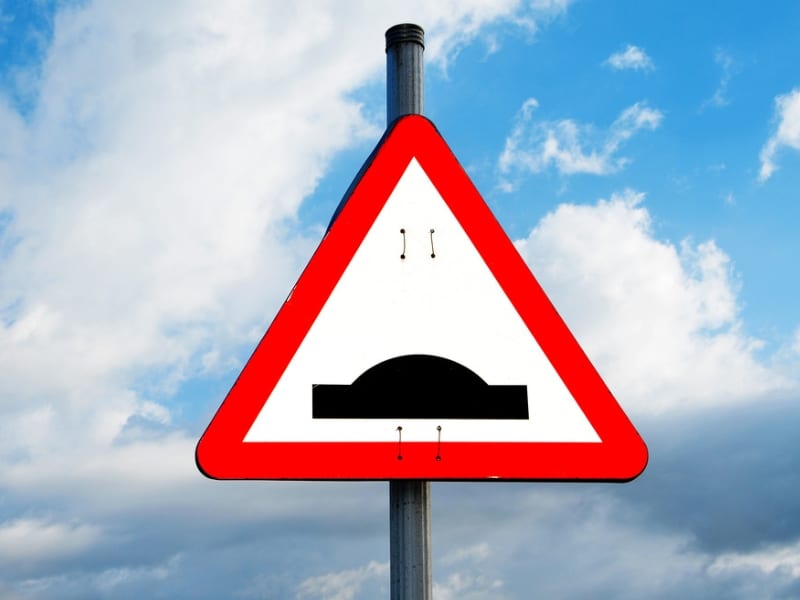

Speed humps, speed bumps, and various other traffic calming measures share a common objective – enhancing road safety. Among these, speed humps are a familiar sight for Australian drivers, encountered frequently each week. However, only a few are well-informed about these effective traffic calming devices.
Despite the well-established speed limits and the substantial penalties for exceeding them, many people continue to disregard the stringent rules of the road. As a response to this issue, numerous traffic calming measures have been implemented to mitigate speeding and create a safer environment for everyone.
Arthur Holly Compton, a renowned physicist, is credited with the invention of “traffic control bumps” in 1953, which we now commonly refer to as speed bumps. His original intention behind creating these bumps was to deter speeding cars as they passed by his university.
However, the concept of traffic calming dates back even further. It was first introduced around 1906 in New Jersey, USA, when the average speed of automobiles had reached 30mph. This pressing need for controlling vehicle speed paved the way for the eventual invention of speed humps.
Should we go even further back? We might be able to trace the origins of traffic control measures even further back in history. Surprisingly, even during a time when horse-drawn chariots and carriages were the swiftest mode of transport, Pompeii demonstrated advanced thinking by constructing stone-based speed control devices on its cobblestone streets. So, while Arthur Holly Compton created the first speed hump, there were traffic calming measures in place throughout history.
The terms “speed bumps” and “speed humps” are often used interchangeably, but they refer to two different things. Speed bumps are designed to be more forceful, being raised higher and usually shorter in width. Typically found in parking lots or private roads, their purpose is to forcefully reduce the speed of vehicles. However, they can be quite jarring if a car hits them too quickly.
On the other hand, speed humps are primarily used for slowing down traffic. They are not as high as speed bumps, allowing vehicles to pass over them at a lower speed with ease. These humps are commonly employed in school zones and residential areas to promote safer driving.
While both speed bumps and speed humps serve different purposes, their goal is quite similar – to prevent road accidents and encourage safe driving practices.
Traffic calming uses physical designs and measures to enhance safety on the road. While speed humps and speed bumps are effective examples of traffic calming methods, they are not the only ones used. Additional methods include pedestrian islands, traffic circles, narrowed roads, and road diets, where a lane is removed from the street. Alongside these, traffic calming devices such as speed limits, speed cameras, and traffic signs also play crucial roles in achieving the shared goal of improving road safety.
In British English, Maltese English, and Caribbean English, a speed bump is commonly referred to as a “sleeping policeman.” Meanwhile, in New Zealand English, it is known as a “judder bar,” and in Colombia, Dominican Republic, Croatia, Serbia, Estonia, Lithuania, Slovenia, Bulgaria, and Russia, it goes by the term “lying-down policeman.”
PARTNERING WITH THE ROAD SAFETY PROFESSIONALS
At Speed Humps Australia, we’ve spent over twenty years focusing on one thing: to provide one style of product and to do it exceptionally well. We have worked tirelessly to develop specifications that do not fade or deteriorate, are easy to install, and are made from high quality, recycled rubber for minimal environmental impact.
With just a handful of our clients around the nation including KFC, Taco Bell, McDonald’s, Coffee Club, Westfield, Shell, Queensland Government, and numerous local councils and mining operations our rumble bars, speed humps and wheel stops have been purposefully designed to truly go the distance.
As our design and production are all handled in-house and supplied Australia-wide, get in touch with us today to request a quote or discuss how we can help with providing a tailored solution to your unique project requirements.



For 10 years, our focus has been on one thing: to provide one style of product and to do it well.
Our wheel stops, speed humps and rumble bars meet Australian Standards, don’t fade, and we’ve never needed to replace one.

For 10 years, our focus has been on one thing: to provide one style of product and to do it well.
Our wheel stops, speed humps and rumble bars meet Australian Standards, don’t fade, and we’ve never needed to replace one.